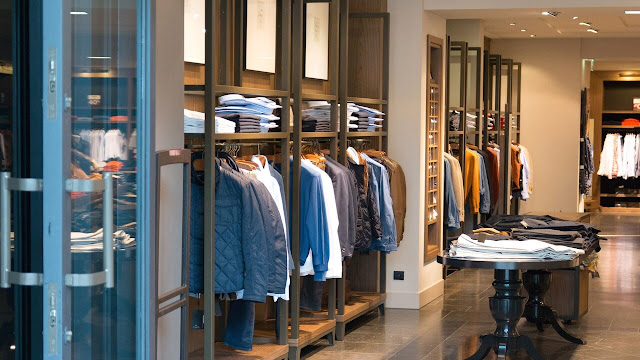Boutique interior design ideas are crucial aspects to consider when designing. Modern boutique interior design ideas can help you attract more consumers and, as a result, increase your monthly income.
A boutique generally sells unique related things, such as women's apparel, shoes, handbags, perfumes, and perfume boxes, most of which are packaged in branded boxes from cardboard box manufacturers. If you've decided to create a boutique, keep in mind that a well-planned boutique design and structure will greatly increase your earnings.
In this article, we've compiled a few boutiques interior design ideas and approaches for modern boutique interior design concepts. Adopting the tips will improve your annual income via the magic of outstanding branded boutique interior design ideas.
Context
- Design the Interior of a Boutique
- Create Sitting Comfort Zones
- Keep The Proper Spacing and Coloration
- Paint An Accessory Wall
- Avoid A Cluttered Appearance
- Setting The Right Location
- Conclusion
Design the Interior of a Boutique
Create Sitting Comfort Zones
Your shop floor design consists of more than just displays, checkout counters, speed bumps, and beachfront property. It is all about inviting your customers in, making them feel at ease, and providing an experience to entice them to return.
Customers' purchase experiences are made more memorable and satisfactory by thoughtful amenities. While dividing up ground space, small business owners should keep buyer conveniences in mind. It is advised that establishments provide various seating options for both consumers and anybody accompanying them. Buyers feel exhausted, as do their friends and family accompanying them for the shopping spree. Why not make their experience less daunting? Contact tables and chairs manufacturers for affordable, durable chair options.
Most clothing stores must also have dressing rooms, but they eat up valuable floor space. Make the most of dressing room space by utilizing adjacent walls for advertising items and accessories like belts and scarves. If you provide dressing spaces, be sure that at least one entrance and converting area complies with ADA accessibility guidelines.
Keep The Proper Spacing and Coloration
Customers should be able to meander over clothing racks or save perimeter if boutique designs are loose-shape. You want to encourage customers to enjoy browsing through your products and make their search as efficient as possible. You can consider color theory dashboard design for a better pick of colors.
Avoid straight aisle tactics that obscure other store areas. Also, there are some suggestions for maintaining good spacing and color;
- Smaller, spherical racks interspersed with displays around the shop's perimeter encourage prolonged browsing.
- Use focal points such as model displays to create one-of-a-kind sections of the store that offer specific types of merchandise.
- Try positioning the table in the back nook so you can view the doorway without glaring down customers as they walk by.
Related: Top 10 Tips for Designing A Small Bathroom
Paint An Accessory Wall
Using colored material or wallpaper on one of your partitions is another way to get the same effect while adding textures and styles to your business. The entire wall is being used to create the appearance of windows. Striking draperies around tall, slender mirrors is another way to create a window impression, giving the illusion of more light and motion in a tiny area.
Hanging shelves at various places is an excellent technique to get this effect. You may also hang curtains and other things from the ceiling to the floor to draw attention up and create the illusion of a larger space.
Avoid A Cluttered Appearance
Architectural lighting is essential in boutique interior design and any retail establishment, but it is especially crucial in small spaces. If a corner in your home isn't constantly well-lit, that square snapshot is as good as lost. It is advisable to use a combination of music lighting fixtures, sconces, lamps, and photograph lighting fixtures. This combination will not only ensure that your whole room is well-lit, but it will also add aptitude and diversity.
Shelving may be a perfectly reasonable approach to maximize your wall space. However, you may come across more innovative, space-saving displaying techniques. Sectioning off areas of a tiny store is difficult but tall; open bookshelves may be a great method to split the gap and showcase items and create an airy atmosphere.
Related: Your Ultimate Roof Maintenance Guide
Setting The Right Location
Use the boutique layout's relative size to your advantage by creating intimate environments. Soft lighting is essential in boutique interior design concepts. The soft lights rather than the harsh fluorescent lighting bulbs are seen in bigger establishments will contribute to creating these environments. Use strategically placed lights to highlight items for your displays.
Carpet or wood flooring will create a more appealing environment than linoleum tile. The interiors, like the exterior, must include unique elements that add a unique flavor to the establishment. As an example, consider incorporating steel panels into the interior design. Remember to include luxurious materials like satin, furniture with a distinctive style, or furniture that fits a certain phrase. You could use the help of sourcing agents in China to import some of these products to your doorstep conveniently.
Conclusion
This boutique interior design may not only make your business more visually appealing, but it can also increase your annual revenue.






